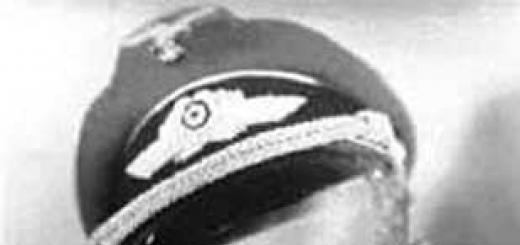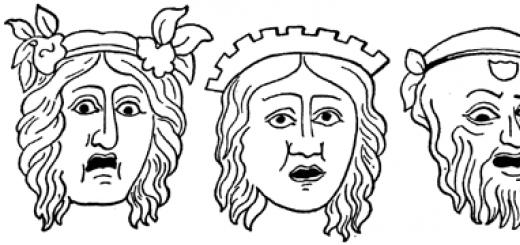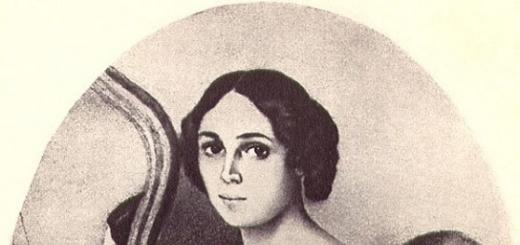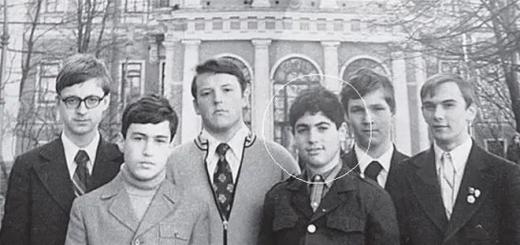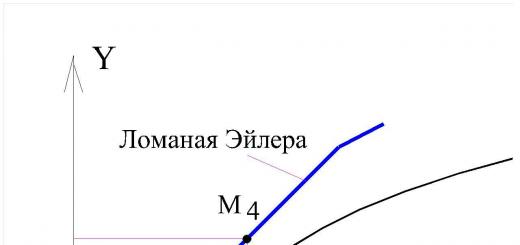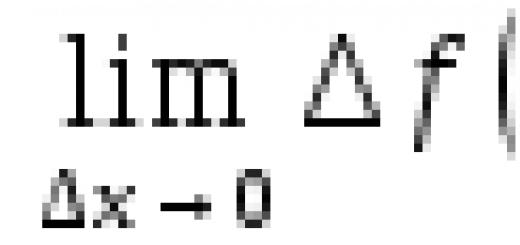Wooden horse of the Greeks. - Cassandra's prediction about the Trojan horse. - Laocoon hits the Trojan horse with a spear. - Sinon convinces to bring the Trojan horse to Ilion. - Death of Priam. - Death of Astyanax, son of Hector and Andromache. - Menelaus forgives Helen. - Trojan captives Hecuba and Cassandra. - Sacrifice of Polyxena at the grave of Achilles.
Wooden horse of the Greeks
The Greeks fulfilled all the predictions about Troy that the soothsayers demanded of them, but in order to enter Troy and take possession of it, they, and mainly Odysseus, came up with the following trick. The sculptor Epeus built a huge wooden horse with help; the armed Odysseus was hidden in it with the bravest of the Greek warriors.
In ancient mythology and the subsequent history of European culture, this wooden horse of the sculptor Epeus received the name Trojan horse. The expression itself Trojan horse has become a common noun in European languages and means something that contains a hidden threat under its attractive appearance.
Rationalizing interpreters of the myths of ancient Greece believed that under the image wooden horses The wooden sea ships that took Troy were reinterpreted allegorically, and later mythology made them into one horse.
The Greeks leave this horse in the middle of the camp, and for show they board ships and sail away. The delighted Trojans leave their city. Seeing a huge wooden horse, some of the Trojans begin to demand that it be brought to Troy and dedicated to the gods in gratitude for deliverance from the Greeks, while others oppose this, especially Cassandra, the daughter of Priam.
Cassandra's prediction about the Trojan horse
Cassandra was the most beautiful of the daughters of the last king of Troy. God Apollo, who sought an alliance with Cassandra, gave her the gift of prediction, but Cassandra did not agree to be his wife. The gods cannot take back their gifts, and the angry Apollo decided that although Cassandra would foretell the truth in her predictions, no one would believe Cassandra’s predictions.
In vain does Cassandra persuade the Trojans, in vain does she predict to them the following in tears: “You fools, what blindness has taken possession of you if you want to introduce this work of cunning and deception into the walls of your city! Don’t you see that your enemies are hidden in it!” (Homer).
Laocoon hits the Trojan horse with a spear
The Trojans do not believe Cassandra, despite the fact that Laocoon, Trojan priest of Apollo, shared the same opinion with Cassandra about the wooden horse of the Greeks.
Laocoon even plunges his spear into the side of the Trojan horse: inside the wooden belly the weapons of the enemies hidden there ring out, but the blindness of the Trojans is so great that they do not pay attention to it.
According to the Roman poet Virgil, Laocoon, hearing the sound of Greek weapons behind the horse's wooden flanks, said:
Quidquid id est, timeo Danaos et dona ferentes -
“Whatever it is, I am afraid of the Danaans [i.e. Greeks], even when they bring gifts.”
These sayings of Laocoon in the transmission of Virgil became Latin winged words.
When Laocoon then sacrificed to the god Poseidon on the seashore with his two sons, two snakes emerge from the depths of the sea. They wrap themselves around the sons of Laocoon; The unfortunate people in fear call their father for help. Laocoön hurries to his sons, but snakes also wrap themselves around him, as if in iron rings. Beside himself with pain and horror, Laocoon calls out to the gods; they remain deaf to his pleas. Having strangled Laocoon and his sons, the snakes hide in the temple of Pallas Athena under her altar.
Horror seized the Trojans. They see the death of Laocoon. It seems to the Trojans that Laocoon is being punished for daring to pierce the sacred horse with a spear, and the people demand that the wooden horse be immediately taken to the temple of Pallas Athena in Troy.
The tragic death of Laocoon and his sons served as the subject for one of the greatest works of ancient sculpture. The famous sculptural group “Laocoon and his sons strangled by the snakes of the goddess Athena” was found in Rome in 1506 and is now in the Vatican.
The Roman writer Pliny the Elder says that it was sculpted by three Rhodian sculptors - Agesander, Polydorus and Athenodorus; the time of their life is unknown, but there is reason to assume that this work dates back to the era of prosperity of the Rhodes school, that is, to 250-200 BC.
Sinon convinces to bring the Trojan horse to Ilion
The next trick of the Greeks further confirmed the Trojans’ decision to introduce a wooden horse into the city.
A Greek named Sinon from Argos wounded himself and covered his entire face with scratches. Drenched in blood, Sinon threw himself at the feet of King Priam, complaining about the cruelty of the Greeks and asking for protection.
Priam received him joyfully, rewarded him with gifts and asked him about the Trojan horse. Sinon replied that the Greeks would die as soon as the wooden horse entered the city of Troy.
Then the Trojans, no longer doubting and hoping for the patronage of Pallas Athena, harness themselves and bring the Trojan horse into the city, preceded by singers and musicians.
At night, a detachment of Greeks, introduced into the city in this way, dismounts from the Trojan horse and opens the gates of Troy to their comrades.
The Greeks surround the palace of the elderly Priam on all sides, who, seeing that crowds of Greeks are breaking into the palace, seeks refuge with his whole family at the foot of the altar of Zeus.
Death of Priam
Achilles' son Neoptolemus, or Pyrrhus, pursues the children of Priam, and the last son dies at the feet of his father.
Priam grabs the dart and with a trembling hand throws it at his son’s killer, but Neoptolemus rushes at Priam and kills him with his sword.
“This is how Priam ended his life, this is how this powerful ruler of Asia, the king of so many nations, perished among the burning Troy. Priam is now nothing more than a bloody torso, a body without a name” (Virgil).
There are many ancient images of the death of Priam and his children.
Death of Astyanax, son of Hector and Andromache
While Priam, struck by the cruel Neoptolemus, dies, Andromache, Hector’s widow, foreseeing the fate of her son Astyanax, tries to hide him. Astyanax clings to his mother Andromache in fear, but she tells him: “You are crying, my son! Do you really understand what awaits you? Why are your little arms wrapped around my neck so tightly, why do you grab my clothes so tightly? Hector will not appear from the ground, armed with his formidable spear, to save you; neither his family, nor the former Phrygian power - nothing will save you. Now you will be thrown from a high cliff by an inexorable enemy, and I will hear your last breath” (Euripides).
The bloodthirsty Neoptolemus is already looking for Hector’s son everywhere. Andromache, washing Neoptolemus’s feet with tears, begs him to grant life to her son, but the stern warrior does not listen to her. Neoptolemus grabs Hector and Andromache's child and throws Astyanax off the cliff.
The group of sculptor Bartolini perfectly conveys the horror of this mythological scene.
Paris dies, pierced by the arrow of Hercules fired by Philoctetes.
Menelaus forgives Helen
Elena, the culprit of all these troubles, seeks salvation at the foot of the altar. Menelaus overtakes her there. Menelaus finally wants to take revenge for the insult inflicted on him, but, struck again by the beauty of Helen, he drops the sword with which he was going to punish the culprit. Menelaus forgets and forgives everything and takes Helen with him.
Trojan captives Hecuba and Cassandra
Many works of art have survived depicting the fall of Troy and the sad fate of Priam.
In the Naples Museum there is a beautiful antique vase on which the most important episodes of the destruction of Troy are presented.
Having taken Troy, the Greeks divided the spoils among themselves and took captives with them to sell them in a foreign country. Apparently, the fate of these unfortunate Trojans, who so bravely defended their hometown and were doomed to live in hard and shameful slavery in their old age, greatly occupied the imagination of ancient artists, because there are beautiful statues in almost all museums, known as “Prisoners.” They are all dressed in Trojan clothes, the expression on their faces is sad and submissive, they all seem to be dreaming and sad about their lost fatherland.
The fate of the Trojan women was the saddest.
The elderly Hecuba, the widow of Priam, went to Odysseus. Mourning the death of her children, Hecuba thinks with horror about her lonely old age and about the terrible hardships and labors that await her, the former queen, in slavery. Hecuba says: “Mortals, let my fate serve you as a lesson: do not call even the happiest mortal happy until his death” (Euripides).
The prophetess Cassandra, daughter of Priam, predicts her union with Agamemnon. Cassandra triumphs in advance, knowing that she will descend into the kingdom of shadows only when she sees the death of the house of Atrides, the descendants of Atreus, who destroyed her family (Euripides). But no one believes Cassandra’s predictions, and Agamemnon takes her away as his captive.
Sacrifice of Polyxena on the tomb of Achilles
Having finally quenched their thirst for revenge, the Greeks set off on their way back. They barely had time to weigh anchor when a storm broke out and the shadow of the formidable Achilles appeared; she began to reproach her comrades for leaving the hero’s grave without making any sacrifice to Achilles.
Achilles was supposed, in the event of peace with Troy, to marry Polyxena, one of the daughters of Priam. The soothsayers, asked what kind of sacrifice Achilles required for himself, answered that he wanted Polyxena to follow him into the kingdom of shadows and become his wife there.
Despite Hecuba's pleas and pleas, Polyxena was sacrificed at Achilles' grave.
Many ancient engraved stones depict Neoptolemus stabbing Polyxena to death with a sword on the tomb of Achilles.
The ancient Greek sculptor Polykleitos sculpted a beautiful statue of Polyxena, which enjoyed great fame in antiquity.

ZAUMNIK.RU, Egor A. Polikarpov - scientific editing, scientific proofreading, design, selection of illustrations, additions, explanations, translations from ancient Greek and Latin; all rights reserved.
July 13th, 2017
Who today does not know the famous legend of Troy and the Trojan Horse? This myth is difficult to believe, but the authenticity of the existence of Troy was confirmed by excavations by the famous German archaeologist Heinrich Schliemann back in the century before last. Modern archaeological research confirms the historicity of the tragic events that occurred in the 12th century BC. More and more details are being revealed about the Trojan War and the circumstances surrounding it...
Today it is known that a major military clash between the union of the Achaean states and the city of Troy (Ilion), located on the shores of the Aegean Sea, occurred between 1190 and 1180 (according to other sources, around 1240 BC) years BC.
The first sources telling about this equally legendary and terrible event were Homer’s poems “Iliad” and “Odyssey”. Later, the Trojan War was the theme of Virgil's Aeneid and other works in which history was also intertwined with fiction.
According to these works, the reason for the war was the abduction by Paris, the son of the Trojan king Priam, of the beautiful Helen, the wife of the king of Sparta, Menelaus. At the call of Menelaus, oath-bound suitors, famous Greek heroes, came to his aid. According to the Iliad, an army of Greeks, led by the Mycenaean king Agamemnon, the brother of Menelaus, set out to free the kidnapped woman.
An attempt to negotiate the return of Helen failed, and then the Greeks began a grueling siege of the city. The gods also took part in the war: Athena and Hera - on the side of the Greeks, Aphrodite, Artemis, Apollo and Ares - on the side of the Trojans. There were ten times fewer Trojans, but Troy remained impregnable.
The only source for us can only be Homer’s poem “The Iliad,” but the author, as the Greek historian Thucydides noted, exaggerated the significance of the war and embellished it, and therefore the poet’s information must be treated very carefully. However, we are primarily interested in the fighting and methods of warfare in that period, which Homer talks about in some detail.
So, the city of Troy was located a few kilometers from the shore of the Hellespont (Dardanelles). Trade routes used by Greek tribes passed through Troy. Apparently, the Trojans interfered with the trade of the Greeks, which forced the Greek tribes to unite and start a war with Troy, which was supported by numerous allies, which is why the war dragged on for many years.
Troy, on the site of which today is the Turkish town of Hisarlik, was surrounded by a high stone wall with battlements. The Achaeans did not dare to storm the city and did not block it, so the fighting took place on a flat field between the city and the besiegers’ camp, which was located on the banks of the Hellespont. The Trojans sometimes broke into the enemy camp, trying to set fire to Greek ships pulled ashore.
Listing in detail the ships of the Achaeans, Homer counted 1186 ships on which a hundred thousand army was transported. Undoubtedly, the number of ships and warriors is exaggerated. In addition, we must take into account that these ships were just large boats, because they were easily pulled ashore and launched quite quickly. Such a ship could not carry 100 people.
Most likely, the Achaeans had several thousand warriors. They were led by Agamemnon, the king of the “many-gold Mycenae.” And at the head of the warriors of each tribe there was a leader.
Homer calls the Achaeans “spearmen,” so there is no doubt that the main weapon of the Greek warriors was a spear with a copper tip. The warrior had a copper sword and good defensive weapons: leggings, armor on his chest, a helmet with a horse's mane and a large copper-bound shield. Tribal leaders fought on war chariots or dismounted.
The warriors of the lower hierarchy were worse armed: they had spears, slings, “double-edged axes,” axes, bows and arrows, shields and were a support for their leaders, who themselves entered into single combat with the best warriors of Troy. From Homer's descriptions one can imagine the environment in which the martial arts took place.
It happened like this.
The opponents were located close to each other. The war chariots lined up; the warriors took off their armor and placed them next to the chariots, then sat down on the ground and watched the single combat of their leaders. The combatants first threw spears, then fought with copper swords, which soon became unusable.
Having lost his sword, the fighter took refuge in the ranks of his tribe or was given new weapons to continue the fight. The winner removed the armor from the dead man and took away his weapons.
For battle, chariots and infantry were placed in a certain order. The war chariots were lined up in front of the infantry in a line maintaining alignment, “so that no one, relying on their art and strength, would fight against the Trojans ahead of the rest alone, so that they would not rule back.”
Behind the war chariots, covering themselves with “convex” shields, lined up foot soldiers armed with spears with copper tips. The infantry was built in several ranks, which Homer calls “thick phalanxes.” The leaders lined up the infantry, driving the cowardly warriors into the middle, “so that even those who don’t want to have to fight against their will.”
The war chariots were the first to enter the battle, then “continuously, one after another, the phalanx of the Achaeans moved into battle against the Trojans,” “they walked silently, fearing their leaders.” The infantry delivered the first blows with spears, and then cut with swords. The infantry fought war chariots with spears. Archers also took part in the battle, but the arrow was not considered a reliable weapon even in the hands of an excellent archer.
It is not surprising that in such conditions the outcome of the struggle was decided by physical strength and the skill of using weapons, which often failed: copper spear tips bent and swords broke. The maneuver had not yet been used on the battlefield, but the beginnings of organizing the interaction of war chariots and foot soldiers had already appeared.
This battle continued until nightfall. If an agreement was reached at night, the corpses were burned. If there was no agreement, the opponents posted guards, organizing the protection of the army in the field and defensive structures (the fortress wall and the fortifications of the camp - a ditch, sharpened stakes and a wall with towers).
The guard, usually consisting of several detachments, was placed behind the ditch. At night, reconnaissance was sent to the enemy’s camp in order to capture prisoners and find out the enemy’s intentions; meetings of tribal leaders were held, at which the issue of further actions was decided. In the morning the battle resumed.
This is roughly how the endless battles between the Achaeans and Trojans proceeded. According to Homer, only in the tenth (!) year of the war the main events began to unfold.
One day, the Trojans, having achieved success in a night raid, drove the enemy back to his fortified camp, surrounded by a ditch. Having crossed the ditch, the Trojans began to storm the wall with towers, but were soon repulsed.
Later, they still managed to break the gate with stones and break into the Achaean camp. A bloody battle for the ships ensued. Homer explains this success of the Trojans by the fact that the best warrior of the besiegers, the invincible Achilles, who had quarreled with Agamemnon, did not participate in the battle.
Seeing that the Achaeans were retreating, Achilles' friend Patroclus persuaded Achilles to allow him to join the battle and give him his armor. Inspired by Patroclus, the Achaeans rallied, as a result of which the Trojans met fresh enemy forces at the ships. It was a dense formation of closed shields “pike near pike, shield against shield, going under the neighboring one.” The warriors lined up in several ranks and managed to repel the attack of the Trojans, and with a counterattack - “strikes of sharp swords and double-edged pikes” - they drove them back.
In the end, the attack was repulsed. However, Patroclus himself died at the hands of Hector, son of Priam, king of Troy. So Achilles' armor went to the enemy. Later, Hephaestus forged new armor and weapons for Achilles, after which Achilles, enraged by the death of his friend, again entered the battle.
Later he killed Hector in a duel, tied his body to a chariot and rushed to his camp. The Trojan king Priam came to Achilles with rich gifts, begged him to return his son's body and buried him with dignity.
This concludes Homer's Iliad.
According to later myths, later the Amazons, led by Penfisileia, and the king of the Ethiopians Memnon came to the aid of the Trojans. However, they soon died at the hands of Achilles. And soon Achilles himself died from the arrows of Paris, directed by Apollo. One arrow hit the only vulnerable spot - Achilles' heel, the other - in the chest. His armor and weapons went to Odysseus, recognized as the bravest of the Achaeans.
After the death of Achilles, the Greeks were predicted that without the bow and arrows of Hercules, who were with Philoctetes, and Neoptolemus, the son of Achilles, they would not be able to take Troy. An embassy was sent for these heroes, and they hastened to help their compatriots. Philoctetes mortally wounded the Trojan prince Paris with an arrow from Hercules. Odysseus and Diomedes killed the Thracian king Res, who was rushing to help the Trojans, and took away his magic horses, which, according to prediction, if they entered the city, would make it impregnable.
And then the cunning Odysseus came up with an extraordinary military trick...
For a long time, secretly from others, he talked with a certain Epeus, the best carpenter in the Achaean camp. By evening, all the Achaean leaders gathered in Agamemnon’s tent for a military council, where Odysseus outlined his adventurous plan, according to which it was necessary to build a huge wooden horse. The most skillful and courageous warriors must fit in its belly. The rest of the army must board the ships, move away from the Trojan shore and take refuge behind the island of Tendos.
Once the Trojans see that the Achaeans have left the coast, they will think that the siege of Troy has been lifted. The Trojans will surely drag the wooden horse to Troy. At night, the Achaean ships will return, and the warriors, hiding in the wooden horse, will come out of it and open the fortress gates. And then - the final assault on the hated city!
For three days the axes clattered in the carefully fenced-off part of the ship's anchorage, and for three days the mysterious work was in full swing.
On the morning of the fourth day, the Trojans were surprised to find the Achaean camp empty. The sails of the Achaean ships melted in the sea haze, and on the coastal sand, where only yesterday the tents and tents of the enemy were colorful, stood a huge wooden horse.
The jubilant Trojans left the city and wandered curiously along the deserted shore. They were surprised to surround a huge wooden horse, towering above the bushes of coastal willows. Some advised throwing the horse into the sea, others - burning it, but many insisted on dragging it into the city and placing it on the main square of Troy as a memory of the bloody battle of nations.
In the midst of the dispute, the priest of Apollo Laocoon approached the wooden horse with his two sons. “Fear the Danaans who bring gifts!” - he cried and, snatching a sharp spear from the hands of the Trojan warrior, threw it at the wooden belly of the horse. The pierced spear trembled, and a barely audible copper ringing was heard from the horse’s belly.
But no one listened to Laocoon. All the attention of the crowd was attracted by the appearance of the young men leading the captive Achaean. He was brought to King Priam, who stood surrounded by court nobility next to a wooden horse. The prisoner identified himself as Sinon and explained that he himself had escaped from the Achaeans, who were supposed to sacrifice him to the gods - this was a condition for a safe return home.
Sinon convinced the Trojans that the horse was a dedicatory gift to Athena, who could bring down her wrath on Troy if the Trojans destroyed the horse. And if you place it in the city in front of the temple of Athena, then Troy will become indestructible. At the same time, Sinon emphasized that this is why the Achaeans built the horse so huge that the Trojans could not drag it through the fortress gates...
As soon as Sinon said these words, a scream of terror came from the direction of the sea. Two huge snakes crawled out of the sea and entwined the priest Laocoon, as well as his two sons, with the deadly rings of their smooth and sticky bodies. In an instant, the unfortunate ones gave up the ghost.
"Laocón and his sons" - a sculptural group in Vatican Museum of Pius Clement depicting a fight to the death Laocoonand his sons with snakes.
Now no one doubted that Sinon was telling the truth. Therefore, we must quickly install this wooden horse next to the temple of Athena.
Having built a low platform on wheels, the Trojans installed a wooden horse on it and drove it to the city. In order for the horse to pass through the Scaean Gate, the Trojans had to dismantle part of the fortress wall. The horse was placed in the designated place.
While the Trojans, intoxicated with success, celebrated their victory, at night the Achaean spies quietly got off their horses and opened the gates. By that time, the Greek army, following a signal from Sinon, had quietly returned and now captured the city.
As a result, Troy was sacked and destroyed.
But why was it the horse that caused her death? This question has been asked since ancient times. Many ancient authors tried to find a reasonable explanation for the legend. A wide variety of assumptions were made: for example, that the Achaeans had a battle tower on wheels, made in the shape of a horse and upholstered in horse skins; or that the Greeks managed to enter the city through an underground passage on the door of which a horse was painted; or that the horse was a sign by which the Achaeans distinguished each other from their opponents in the dark...
Almost all the heroes, both Achaeans and Trojans, die under the walls of Troy. And of those who survive the war, many will die on the way home. Some, like King Agamemnon, will find death at home at the hands of loved ones, while others will be expelled and spend their lives wandering. In essence, this is the end of the heroic age. Under the walls of Troy there are no victors and no vanquished, heroes are becoming a thing of the past, and the time of ordinary people is coming.
Curiously, the horse is also symbolically associated with birth and death. A horse made of spruce wood, carrying something in its belly, symbolizes the birth of a new one, and the Trojan horse is made of spruce boards, and armed warriors sit in its hollow belly. It turns out that the Trojan horse brings death to the defenders of the fortress, but at the same time it also means the birth of something new.
Around the same time, another important event took place in the Mediterranean: one of the great migrations of peoples began. Tribes of the Dorians, a barbarian people who completely destroyed the ancient Mycenaean civilization, moved from the north to the Balkan Peninsula.
Only after several centuries will Greece be reborn and it will be possible to talk about Greek history. The destruction will be so great that the entire pre-Dorian history will become a myth, and many states will cease to exist.
The results of recent archaeological expeditions do not yet allow us to convincingly reconstruct the scenario of the Trojan War. However, their results do not deny that behind the Trojan epic lies the story of Greek expansion against a major power located on the western coast of Asia Minor and preventing the Greeks from gaining power over this region. We can only hope that the true history of the Trojan War will someday be written.
Mythological ideas existed at certain stages of development among almost all peoples of the world. If Europeans before the Age of Discovery were familiar only with ancient myths, then they gradually learned about the presence of mythology among the inhabitants of Africa, America, Oceania, and Australia. The Bible contains echoes of the mythological era among the Semitic peoples. Before the adoption of Islam, the Arabs had their own mythology. Thus, we talk about the immanence of mythology in human consciousness. The time of origin of mythological images cannot be determined; their formation is inextricably linked with the origin of language and consciousness. The main task of myth is to set patterns, models for every important action performed by a person; myth serves to ritualize everyday life, enabling a person to find meaning in life.
According to supporters of the theory of paleocontacts, myths are history, events that actually happened. A modern example of this meaning of the word “myth” is “cargo cult.” Therefore, they offer religion and science a new look at mythology. As examples, they give descriptions of strange phenomena, for example from the Bible, and give them new explanations using modern knowledge of science and terminology.
Myth of the Trojan Horse
The war between the Trojans and the Danaans began because the Trojan prince Paris stole the beautiful Greek Helen from the city of Sparta. Her husband, King Menelaus of Sparta, with his brother Agamemnon, gathered an army of Greeks and went to Troy.
During the war with Troy, the Achaeans, after a long and unsuccessful siege, resorted to cunning: they built a huge wooden horse, left it near the walls of Troy, and they themselves pretended to sail away from the shore of the Troas (the invention of this trick is attributed to Odysseus, the most cunning of the Danaan leaders , and the horse was made by Epeus). The horse was an offering to the goddess Athena of Ilium. On the side of the horse was written “This gift is brought to Athena the Warrior by the departing Danaans.” To build the horse, the Hellenes cut down the dogwood trees that grew in the sacred grove of Apollo ( cranei), they appeased Apollo with sacrifices and gave him the name Carnea (or the horse was made of maple).
The priest Laocoont, seeing this horse and knowing the tricks of the Danaans, exclaimed: “Whatever it is, I am afraid of the Danaans, even those who bring gifts!” (Quidquid id est, timeo Danaos et dona ferentes!). But the Trojans, not listening to the warnings of Laocoon and the prophetess Cassandra, dragged the horse into the city. Virgil’s hemistich “I am afraid of the Danaans, even those who bring gifts,” often quoted in Latin (“Timeo Danaos et dona ferentes”), has become a proverb. This is where the expression “ Trojan horse", used in the meaning: secret, insidious plan.
At night, the Greeks, hiding inside the horse, got out of it, killed the guards, opened the city gates, let in their comrades who had returned on ships, and thus took possession of Troy.
Mythological consciousness
For mythological consciousness, everything that exists is animate. Mythological space is the space of the soul.
Mythological consciousness is characterized by opposition to rationality, spontaneity, unreflective worldview, which, on the one hand, makes myth vulnerable to rational criticism, on the other hand, takes it out of the space of such (hence the stability of mythological ideas and the difficulty of combating them; for rational persuasion, a person must already admit that the mythological explanation of what is happening is not the only possible one and may turn out to be unreliable). Mythologems are stable over time and give different manifestations in different cultural and social conditions. Myth is opposed by both scientific rationality and theological rationality inherent in theistic religions. Therefore, it is impossible to identify myth and religion, although, for example, some forms of religiosity (the so-called “folk religiosity”) move from the sphere of theologically reflected religion into the field of mythology and secondary mythological understanding of dogmas, rituals, and other religious practices.
Hence the relevance of mythological consciousness for any cultural era; only the degree of its social prestige and the scope of its wide distribution changes. The constant area of realization of mythological consciousness is everyday life, where the existence of old and the generation of new myths is constant and intense. This mythology is expressed in modern folklore (urban folklore associated with urban mythology, pseudo-religious folklore reflecting the mythological interpretation of religion, professional folklore associated with professional mythology, etc.). Everyday mythology exists according to very old mythomagic principles, for example, the confusion of causal and spatio-temporal contiguity (this is where a lot of superstitious practices-signs, “happy”, “unlucky”, etc. come from). Fears, including mass ones, are also caused not by a rational analysis of their possible causes, but by a mythological understanding of what is happening and the actualization of mythologies (for example, the mythology of a disaster). Mythological consciousness should also be attributed to the obligatory search by the average person for someone personally responsible for something that happens, as well as an exaggeration of the role of participation in events that have the nature of system dynamics of any individual. A purely mythological attitude to animate and personify the environment is also manifested here.
Wooden horse
The soldiers and leaders, who were tired of the protracted war, joyfully welcomed Ulysses' proposal to take the city by cunning. They secretly built a colossal wooden horse, the belly of which could accommodate a large army. The main army, having allegedly lost hope of capturing the city, boarded ships, leaving this horse at the site of their camp. Rumors spread everywhere that this horse was a sacrifice to Neptune. The cunning slave Sinon stayed behind to convince the Trojans to bring the horse into the city and place it in the square as a monument to the courage of the townspeople.
To the undisguised joy of the Trojans, the Greek fleet sailed away. But they did not know that the ships had not gone far - they hid behind the island of Tenedos and began to wait. All the inhabitants of Troy left the city, surrounded the horse and began to ask Sinon why he stayed. The slave began to complain about the Greeks and advised the Trojans to keep the Greeks' sacrifice to Neptune in their city.
From the book The Newest Book of Facts. Volume 2 [Mythology. Religion] author Kondrashov Anatoly PavlovichWhat does the expression "Trojan horse" mean? After the death of Paris, the Trojans no longer risked going out to battle in the open field, but the powerful walls of Troy still remained an insurmountable obstacle for the Greeks. Odysseus found a way out of the situation. On his advice, Master Epeus
From the book Proverbs of Humanity author Lavsky Viktor VladimirovichHow was the winged horse Pegasus born and how did it become a symbol of poetry? In Greek mythology, Pegasus is a winged horse, the son of Poseidon and the gorgon Medusa, who was born along with the warrior Chrysaor from the dead body of a monster beheaded by Perseus. Bellerophon bridled
From the book The Iron Flute (Tetteki Tosui) author author unknownWooden Buddha Master Tennen Tanka once visited the temple and stayed there overnight. The temple abbot was happy because Tennen Tanka was a very famous teacher, and it was a great blessing for the temple that he came here. But last night Tennen did something...
From the book Adin Steinsaltz answers questions from Mikhail Gorelik author Steinsaltz AdinWhere did the horse go? The prince bought a purebred horse and, in order to protect it from thieves, placed it in a brick stable, guarded by an armed guard. One night the prince could not sleep and decided to take a walk. Walking past the stables, he noticed the watchman: he seemed
From the book Myths and Legends of Ancient Rome author Lazarchuk Dina Andreevna59. Wooden armrest Once in the Ili-chuan monastery, the cook-monk hosted a monk-gardener. As they sat at the table, birdsong was heard. As soon as it fell silent, the gardener tapped his finger on the arm of the chair. The bird began to sing again, but soon fell silent.
From the book Encyclopedia of Classical Greco-Roman Mythology author Obnorsky V.86. Tszyu-fen's wooden ball Once Tszyu-fen began his lecture by showing a wooden ball on a small platform. Fugai: Curved cucumber. Juan-sha followed the ball, picked it up and put it back in its place. FUGAI: Round watermelon.NEGEN: When Yuan-wu gave a lecture about
From the author's bookRider and Horse Published in issue 10 of Mekor Chaim, 1999. What can love be compared to? A mountain? With an elephant? With a million dollars? The experience of love is given directly, but how to describe it? Adin Steinsaltz answers questions from Mikhail Gorelik - Last time, when we
From the author's book From the author's bookTrojan Horse In ancient Greek mythology, the episode with the Trojan Horse is one of the final episodes of the poem “Iliad”. After a long and unsuccessful siege, the Greeks resorted to cunning: they built a huge wooden horse, left it near the walls of Troy, and pretended to
Even after long battles, the Greeks could not take possession of the city. Then Odysseus decided to act by cunning. He advised the Greeks to build such a huge wooden horse that the most powerful warriors could hide in it. And when the Trojans bring the horse into the city, the heroes will come out at night and open the gates of the city. Odysseus assured that this was the only way to take Troy. The prophetic Kalkhant, to whom Zeus sent a sign, also convinced the Greeks to resort to cunning.
The famous artist Epeus and his student, with the help of the goddess Athena, built a huge wooden horse. It included armed warriors. Aeneas closed the hole through which the heroes entered so tightly that it was impossible to even think that there was someone on the horse. Then the Greeks burned all the buildings in their camp, boarded a ship and sailed to the open sea.
From the high walls of Troy, the besieged saw extraordinary movement in the Greek camp. Suddenly they noticed that thick clouds of smoke were rising from the Greek camp. Rejoicing, the Trojans left the city and went to the camp, which was really abandoned, with buildings still burning out in some places. They were sure that the siege had finally ended, all troubles had passed, and they could now indulge in peaceful labor.
Suddenly the Trojans stopped in amazement when they saw a wooden horse. They looked at it and were at a loss as to what this amazing structure was. Some of them advised throwing the horse into the sea, others - taking it to the city and placing it on the acropolis. An argument began. Then the priest of the god Apollo, Laocoon, appeared before the disputants. He passionately began to convince his fellow citizens to destroy the horse.
Laocoon was sure that the horse was some kind of military trick invented by Odysseus. Laocoon did not believe that the Greeks had abandoned Troy forever. He begged the Trojans to beware of the horse. Laocoon grabbed a huge spear and threw it at his horse. The statue shuddered from the blow, and the weapon inside it rattled dully. But the gods darkened the minds of the Trojans - they still decided to take the horse to the city.
Suddenly a loud scream was heard. It was the shepherds who were leading a bound prisoner who surrendered voluntarily. This captive was the Greek Sinon. The Trojans surrounded him and began to mock him. Sinon stood silently, fearfully looking at the enemies surrounding him. Finally, he spoke. He complained bitterly, shedding tears, about his evil fate. Sinon Priam and all the Trojans were touched by the tears. They began to ask the detainee who he was and why he stayed. Then Sinon told a fictitious story that Odysseus had invented for him in order to deceive the Trojans.
The Trojans believed the cunning Greek. Priam ordered his release and asked what the meaning of this wooden horse, left by the Greeks in the camp, meant. This was the only question Sinon was waiting for. Calling the gods to witness that he was telling the truth, Sinon said that the horse was left to appease the formidable Athena. The Trojans believed Sinon. He deftly played the role that Odysseus entrusted to him.
The Trojans were further convinced that Sinon was telling the truth by the terrible snakes sent by Athena. They quickly swam to the shore, twisting in the waves. The creatures crawled ashore and all the Trojans fled in horror. The snakes rushed at the two sons of Laocoon and wrapped themselves around them. Laocoon hastened to help his sons, but snakes also entwined him. With their sharp teeth they tormented the bodies of the priest and his two sons. The unfortunate man tried to tear the snake off himself and free his children, but in vain. The poison penetrated deeper into the body.
The suffering of Laocoon and his sons was terrible. Laocoon died, seeing the terrible death of his innocent children, he died because he wanted, contrary to the will of God, to save his homeland. The snakes, having completed their vile deed, crawled away and hid under the shield of the statue of Athena.
The death of Laocoon finally convinced the Trojans that they should bring the wooden horse to Troy. They dismantled part of the city wall, since the huge statue could not be transported through the gate. The horse stopped four times, hitting the wall when they dragged him through the gap, and the Greek weapons rattled menacingly from the shocks, but the townspeople did not hear this. Finally, they dragged the horse to the acropolis.
Prophetic Cassandra was horrified when she saw the horse. She foreshadowed the death of Troy, but the Trojans responded with laughter - they never believed her predictions.
The warriors sat on their horses in deep silence, sensitively listening to every sound coming from outside. They heard beautiful-haired Elena calling them by name, imitating the voice of their wives. Odysseus forcibly restrained one of the heroes, covering his mouth so that he would not answer.
Night has come. Troy fell into a deep sleep. Sinon's voice was heard near the wooden statue - he let the heroes know that they could now leave. Sinon also managed to build a large fire at the gates of Troy. This was a sign to the Greeks who had taken refuge behind Tenedos to hurry to the city. Carefully, trying not to make any noise with their weapons, the heroes dismounted; the first were Odysseus and Aeneas. The heroes scattered along the sleepy streets of Troy. Houses burst into flames, illuminating the dying city with a bloody glow. The rest of the Greeks also came to the aid of the heroes. A terrible battle began. The Trojans defended themselves with whatever they could.
In anger, Menelaus would have killed the beautiful Helen, but Agamemnon held him back. The goddess Aphrodite again awakened love for Helen in the chest of Menelaus, and he solemnly led her to his ship.
Of all the heroes of Troy, only Aeneas escaped, carrying his old father Anchises and his little son Ascanius out of the city in his arms. The Greeks also spared the Trojan hero Antenor. He repeatedly advised the Trojans to hand over the beautiful-haired Helen and the treasures of Menelaus stolen by Paris.
Troy was still burning for a long time. Clouds of smoke rose high into the sky. The gods mourned the death of the great city. This huge funeral pyre was visible in the distance. Pala Troy is the most powerful city in Asia. The Achaeans won, but at what a high cost!
The formidable hordes of the commander, Agamemnon, king of kings
I looked around at the crowds of people who had survived the prey -
And he bowed his head,
Obsessed with a sad thought -
Many of them came to Troy,
Few of them will return with him...
Homer, "Iliad".
The Trojan War did not bring success to either side. It turned into a tragedy, but generated not by chance, but by the inscrutable ways of fate. The fate of Troy, the Trojans, and the Achaean heroes was predicted and inexorable. For most of its participants, the Trojan War brought death or shame, exile.
| |
